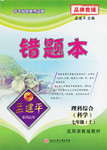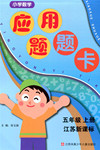题目内容
Labor force is defined as being the total number of people who are available to work and earn income. This definition includes everyone who is employed or seeking paid employment, so it includes employers and the self-employed. Labor is one of the country's resources which can be combined with other resources to produce the goods and services wanted by the community.
Although the size of the workforce depends a great deal on the size of the total population, there are several other influences which also affect it. The age distribution (分布) of the total population has a very marked effect on the available workforce. If the population has a high proportion of very young people or of those too old to work, then the available workforce would be lower than if there were a balanced spread age distribution. If the population naturally grows rapidly, the number of births greatly exceeds (超出) the number of deaths then as a total population increases proportion of the workforce declines.
Sometimes a population is described as aging which means that the birth rate is either falling or growing very slowly, and as people retire from the workforce there are insufficient numbers of young people entering it to replace those who are leaving it. In that situation the population is top-heavy with older people. So the percentage of the population in the workforce declines when there is either a rapid increase in births or a falling birth rate.
The age distribution of the population has several important effects on the economy. If the population is aging and there is an increase in the number of people retiring without a corresponding increase in the number entering the workforce, this raises the problem of the ability of the economy to provide a reasonable level of social services to the retired group. If the aged are to be cared for in special homes, finance must be available for that purpose. If the size of the workforce is small relative to the total population, then the government tax revenue (税收) is relatively low and either the government has less money available to it or the workforce members have to be taxed more heavily.
1.In the passage “labor force” is defined as ___________.
A.people who are available to work and earn income
B.self-employed people only
C.people who are looking for an employment
D.employers who create job opportunities
2.The conclusion which can be drawn from the second paragraph is that___________.
A.a natural growth of population leads to a balanced workforce
B.a large population does not necessarily mean a higher proportion of workforce
C.the larger the population, the higher the proportion of the workforce
D.the workforce will be lower, if the population has a balanced age distribution,
3.When a population is said to be aging,___________.
A.there are more people retiring than those entering the workforce
B.the birth rate must be growing
C.there should be an oversupply of workforce
D.There are more people entering the workforce than those retiring
4.The population which is top-heavy with older people ___________ of a country.
A.leads to the high rate of unemployment
B.results in low tax on the workforce members
C.affects employees’ incomes
D.places pressure on the economy
1.A
2.B
3.A
4.D
【解析】略

 孟建平错题本系列答案
孟建平错题本系列答案 超能学典应用题题卡系列答案
超能学典应用题题卡系列答案In America,where labor costs are so high, do-it-yourself is a way of life.Many people 36 their own car,build their own garages,even rebuild their own 37 .Soon they may also be writing their own books.In Hollywood there is a company 38 publishes(出版) Children’s books 39 the help of computers.Although other book 40 also publish that way,this particular company is very 41 .It “personalizes”(使个性化)the book by having the computer make the reader the leading character in the story.Here is 42 they do it.Let us say your child 43 Jenny.She lives on Oak Drive in St. Louis,has a dog named Spot,a cat named Tabby,and three playmates 44 names are Betty,Sandy ,and Jody.The computer uses this 45 to fill out a story that has 46 been prepared and illustrated(发行).The story is then printed(印刷) with standard equipment 47 a hard-cover book.A child who 48 such a book might say,”This book is about me”;the company therefore calls 49 the Me-book Publishing Company”.
Children like the Me-books because they like to see their own names in print and 50 of their friends and their pets. 51 more important ,”personalization” has been 52 to be important tool(工具) in __53 enthusiasm(热情) for reading.So Me-books are helping 54 to learn how to read, 55 appealing to(吸引) that natural desire to see his own name in print.
| 【小题1】 |
|
| 【小题2】 |
|
| 【小题3】 |
|
| 【小题4】 |
|
| 【小题5】 |
|
| 【小题6】 |
|
| 【小题7】 |
|
| 【小题8】 |
|
| 【小题9】 |
|
| 【小题10】 |
|
| 【小题11】 |
|
| 【小题12】 |
|
| 【小题13】 |
|
| 【小题14】 |
|
| 【小题15】 |
|
| 【小题16】 |
|
| 【小题17】 |
|
| 【小题18】 |
|
| 【小题19】 |
|
| 【小题20】 |
|
| 完形填空。 | ||||
| There once was a young monk(僧侣) who was building a brick wall. He took great care in 1 the bricks, ensuring that they were level and that every row of b  ricks was 2 . He worked and worked. His ricks was 2 . He worked and worked. His progress was 3 , due to the great care in his work, but he wasn't 4 . He was going to build a beautiful brick wall, his first brick wall. Finally, the day dawned(破晓) when he 5 his wall. But 6 he stood back and admired the fruits of his labor, something caught his eye and made him very 7 . Despite the great 8 he took in his work, 9 , he had overlooked(忽视) two bricks that were laid slanted(倾斜的). Worst of all, the bricks were right in the centre of the wall. Since then, whenever visitors came to the temple, the young monk would 10 them around to all places, except the brick wall that he had built. One day, two elderly monks came to the temple. No matter 11 the young monk tried to detour (绕路) to 12 the ugly brick wall, the elderly monks 13 touring the area around that brick wall . 14 , the young monk brought them to the brick wall. "Oh, this is such a(n) 15 brick wall!" one of the elderly monks commented. "Are you 16 ? Haven't you seen the two ugly bricks in the middle of the wall?" the young monk said in 17 . "Yes, I have." replied the elderly monk. "But I also saw the remaining 98 good bricks that 18 this a beautiful wall!" You see, most of the time, we only care for things that went wrong or didn't 19 our expectations. We've forgotten the fact that they are only two bad bricks in the wall and we should not overlook the 20 of the remaining 98 bricks. | ||||
|
American society is on the go. There are two elements in life that Americans do regard much: ― 31 and labor.
Americans are " 32 to nothing but the clock ", it has been said. Time is 33 as if it were the most valuable thing. In American language, there are words 34 with time. Such as: time can be budgeted, saved, wasted, stolen, killed, and cut. Americans also 35 for time, as " the time is the money ". So time is really 36 to them. Many people have a rather acute (敏锐的) sense of the 37 of their lifetime. Their belief is that once " the sands have run out of a person's hourglass ", they can not be replaced. Americans want every minute to 38 .
Since people value time highly, they dislike someone else " 39 " it beyond a certain acceptable limit. This affects the matter of patience. In the American system of 40 , patience is not a high quality. Many of them have what 41 be called " a short fuse ". They begin to move 42 restlessly if they feel time is slipping away 43 any return.
Most Americans live in period of time by engagement calendars, which might be 44 periods as short as fifteen minutes. While in the business world, Americans are not likely to receive their visitors in homelike 45 over long but small talk; let 46 take them out for dinner. Once they are in business, 47 to most of them is not so important. They'd like to seek out assurance of past actual performance 48 evaluate a business partner through present 49 contact. Thus, they start dealing with business very quickly as they 50 have other appointments following hard on the heels. Time is therefore keeping ticking in their inner ear.
31. A. money | B. fortune | C. time | D. family |
32. A. masters | B. slaves | C. owners | D. defenders |
33. A. passed | B. cost | C. changed | D. treated |
34. A. kept | B. mixed | C. associated | D. stood |
35. A. charge | B. ask | C. appreciate | D. care |
36. A. worthless | B. precious | C. expensive | D. common |
37. A. happiness | B. sadness | C. shortness | D. tiredness |
38. A. use | B. help | C. count | D. move |
39. A. waiting | B. wasting | C. keeping | D. finding |
40. A. languages | B. judgments | C. terms | D. values |
41. A. need | B. shall | C. must | D. might |
42. A. about | B. on | C. by | D. forward |
43. A. with | B. for | C. without | D. on |
44. A. joined up to | B. divided into | C. connected with | D. made up of |
45. A. surroundings | B conversation | C. existence | D. conditions |
46. A. alone | B. down | C. out | D. off |
47. A. conversation | B. bargain | C. money | D. friendship |
48. A. more than | B. other than | C. sooner than | D. rather than |
49. A. close | B. frequent | C. social | D. long |
50. A. never | B. always | C. seldom | D. sometimes |